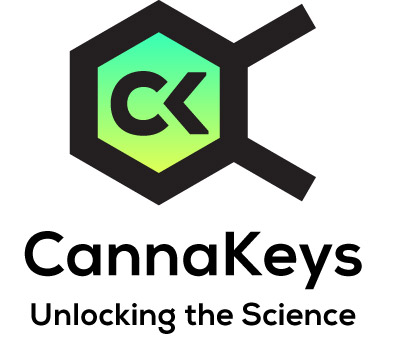Cannabigerolic Acid (CBG-a) Research Dashboard
What am I missing as a non-subscriber?
To see a full dashboard with study details and filtering, go to our DEMO page.
As a subscriber, you will be able to access dashboard insights including chemotype overviews and dosing summaries for medical conditions and organ system and receptor breakdowns for cannabinoid and terpene searches. Study lists present important guidance including dosing and chemotype information with the ability to drill down to the published material. And all outputs are fully filterable, to help find just the information you need. Stay up-to-date with the science of cannabis and the endocannabinoid system with CannaKeys.
CannaKeys has 54 studies associated with Cannabigerolic Acid (CBG-a).
Here is a small sampling of Cannabigerolic Acid (CBG-a) studies by title:
- Effects of combined CBGA and cannabis-derived terpene nanoformulations on TRPV1 activation: Implications for enhanced pain management
- Therapeutic Potential of Cannabinoid Receptors Type 1 and 2-Novel Insights for Enhancing the Chance of Clinical Success
- A new cannabigerolic acid derivative and its unprenylated precursor produced through the reconstitution of cannabinoid biosynthesis in Streptomyces
- Investigating the Antimicrobial Efficacy of Cannabinoids and Their Derivatives Against Neisseria Gonorrhoeae by Computational Analysis.
- High-Performance Liquid Chromatography with DAD Detection for the Determination of Cannabinoids in Commercial Veterinary CBD Oil
Components of the Cannabigerolic Acid (CBG-a) Research Dashboard
- Top medical conditions associated with Cannabigerolic Acid (CBG-a)
- Proven effects in clinical trials for Cannabigerolic Acid (CBG-a)
- Receptors associated with Cannabigerolic Acid (CBG-a)
- Individual study details for Cannabigerolic Acid (CBG-a)
Ready to become a subscriber? Go to our PRICING page.
Page Quick Links
Select New Cannabinoid
Overview - Cannabigerolic Acid (CBG-a)
Description of Cannabigerolic Acid (CBG-a)
The phytocannabinoid (plant-based) Cannabigerolic-acid (CBGA) was discovered in 1965. It is the initial precursor to other phytocannabinoids. CBGA is present abundantly in the young plant but diminishes as it grows more mature and CBGA is converted to CBG.
CBGA is absorbed ~40 times better than cannabigerol (CBG), and no adverse effects have been noted (K. Amstutz et al., 2022)
Other Names:
Molecular Formula C22H32O4Cannabigerolic acid, CBGA, and other supplier-based synonyms.
IUPAC Name: 3-[(2E)-3,7-dimethylocta-2,6-dienyl]-2,4-dihydroxy-6-pentylbenzoic acid
Molecular Formula: C22H32O4
Source-PubChem
Cannabigerolic Acid (CBG-a) Properties and Effects
Only Members can view Properties and Effects information. See DEMO page.
Cannabigerolic Acid (CBG-a) Receptor Binding
Only Members can view Receptor Binding information. See DEMO page.
Disclaimer
Information on this site is provided for informational purposes only and is not meant to substitute for the advice provided by your own licensed physician or other medical professional. You
should not use the information contained herein for diagnosing or treating a health problem or disease. If using a product, you should read carefully all product packaging. If you have or suspect that you have a
medical problem, promptly contact your health care provider.
Information on this site is based on scientific studies (human, animal, or in vitro), clinical experience, or traditional usage as cited in each article. The results reported may not necessarily occur in all individuals. For many of the conditions discussed, treatment with prescription or over-the-counter medication is also available. Consult your physician, nutritionally oriented health care practitioner, and/or pharmacist for any health problem and before using any supplements or before making any changes in prescribed medications.

